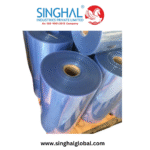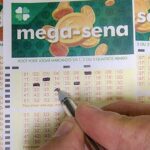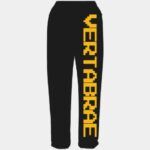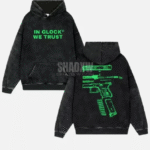From India’s moving agricultural regions to the sophisticated logistics hub in Europe, an unmatched product plays an important role: Pp Woven Bags Manufacturer In Gujarat. Often ignored, these bags are unheard of packaging heroes, their unique combination of strength and light weight makes them indispensable in countless industries. In the world of this guide PP woven bags, their construction, discover different applications and why they have become two-to-two solutions for reliable and efficient handling of materials.
Simple Construction: Strength In Each String
In the core, a PP -woven bag is a will for smart design. The “knitted” aspect is important: Instead of the same sheet, polypropylene bands are extruded, stretched and then woven together in a crisscross pattern, like a cloth. This interlocking structure distributes just as much stress, despite the minimal weight, the bag provides remarkable tear resistance and supporting capacity. This underlying power is a big difference from other packaging materials, so PP -woven bags can meet the rigor of transport, stacking and handling without compromising on the content.
Versatility Unleashed: Beyond Simple Containment
Applications of PP -Woven bags are surprisingly different, which are spread beyond the first perception of a simple sack. In the agricultural sector, the preferred alternatives for grain, fertilizers, seeds and animal feed are due to breathing, which helps prevent malfunction, and their ability to meet external risk. The construction industry depends on them for cement, sand, gravel and other construction materials, which appreciate their durability and resistance to friction. Food producers use them for wholesale materials such as Chinese, flour and rice often choose for food variants that meet tight hygiene standards.
The dealers use them for different bulk goods, and even the waste management benefits from their strong construction to collect and transport recircles. From delicate food products to rigid industrial content, the pure optimization capacity of these bags emphasizes their necessary role in the global supply chain.
The Lightweight Advantage: Efficiency In Motion
While strength is of the greatest importance, the light nature of the PP woven bags is equally important for their broad adoption. Pp Woven Laminated Bag offer a significant weight reduction, compared to some paper bags with traditional jute bags or even similar capacity. It is translated directly to cost savings in the logistics chain. Lighter bag means low shipping costs, low fuel consumption during transport and simple manual handling, which reduces the risk of employee injury. For companies working on a tight margin, every village saved can contribute to adequate improvement in the downline. This combination of strength and ease makes them economically viable and environmentally intelligent for bulk packaging.
Specific Solution: Demolition And Hd-Pp Innovation
The versatility of the Hdpe Pp Woven Bags is further improved by special treatment and material variations. An important progress is the PP knit laminate bag. Here, a thin layer of the film is used on a thin layer -woven fabric of polypropylene or bop (biaxally oriented polypropylene). This demolition provides an excellent moisture barrier to make these bags ideal for sugar, chemicals, or even certain food products such as hygroscopic materials, which require humidity protection.
Conclusion
PP knit bags, with its simple construction, are actually a sophisticated and inevitable component of the modern trade and industry. Adaptability through innovations such as the underlying power, remarkable light properties and demolition and material mixtures make it an ideal solution to pack a large selection of accessories. From agricultural products to building materials, and from bulk chemicals to retail products, these bags provide reliable control and efficient transport, which proves that they ignore the global supply chains that have not yet been proven the necessary back bones yet. When we look at the future that requires both efficiency and stability, the PP knit bag will undoubtedly continue to develop, really strong, yet strong as a mild packaging champion.
Frequently Asked Questions
Question: Do PP woven bags more durable than other packaging materials such as paper or jute sacks?
A: Polypropylene bands are woven together in a crisscross pattern, making a strong, interlock fabric. This woven structure distributes stress evenly into the bag, making it very resistant to tearing, puncturing and cracking under significant loads. Unlike paper, which can easily tear when wet or stressed, or jute, which may be exposed to rotting and insect infection, PP -woven bags are also naturally resistant to moisture, chemicals and many environmental factors.
Question: Can PP -Woven bags be recycled and what are their environmental benefits?
A: Polypropylene (PP) is a thermoplastic polymer, which means it can be melted and new plastic products can be improved. Environmental benefits include low landfill, conservation of raw materials and less energy consumption than virgin plastic production. In addition, the durability of the PP woven bags often allows more reuse in some applications, further improves their lifetime and reduces the general environmental footprint.
Question: What is the main difference between a regular PP woven bag and a PP woven laminated bag, and when should I choose one over the other?
A: The main difference lies in the extra layer of demolition. A regular PP woven bag provides excellent power and ability to breathe, making it suitable for products that do not require moisture protection or that require “breathing” (like any agricultural products). On the other hand, a PP is applied to the surface of a thin film (usually polypropylene or BOP), in a woven laminate. This demolition creates a moisture barrier, making it ideal for hygroscopic ingredients such as sugar, fertilizer or chemicals that must be protected from moisture. It also allows high quality printing, making laminated bags popular for retail package where branding is important. You should choose a laminate bag when moisture safety, increased appearance or obstacle properties are important for your product.












